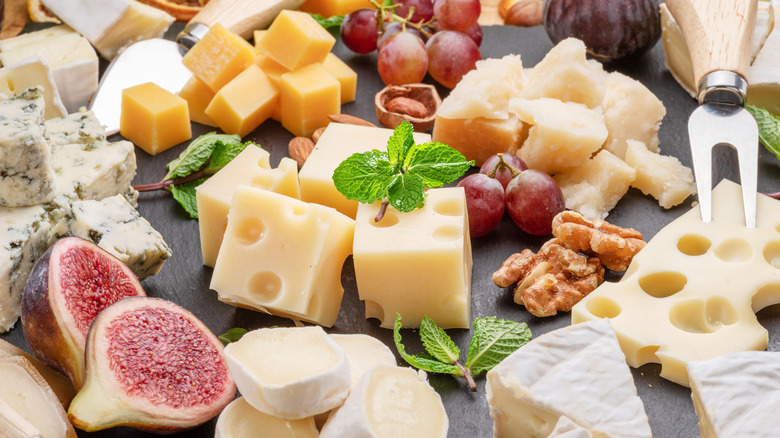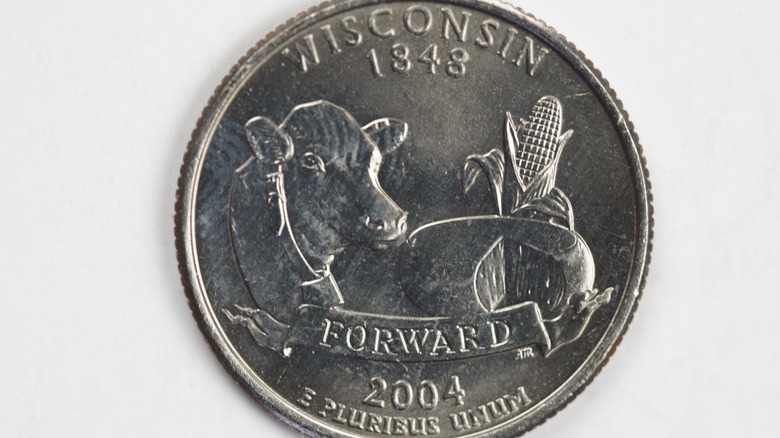The US State That Produces The Most Cheese
Don't worry, it's not a trick question — as you almost certainly could have guessed, Wisconsin, home to two Great Lakes, the Green Bay Packers, and Summerfest, is also King of Dairy by a somewhat absurd margin. To put it in perspective, if Wisconsin were a country, it would be the 4th biggest cheese producer in the world, after the United States, Germany, and France, according to Wisconsin Cheese. Per the same source, the state's cheese can be found in 98% of the nation's grocery stores, with a total production of about 3.5 billion pounds of cheese annually. In comparison, the next-highest cheese-producing state, California, makes a little less than 2.5 billion pounds each year (via California Dairy Press Room).
But this is one of those questions that, once answered, only begets more questions. Why does Wisconsin make so much cheese? Is it the best quality cheese, or simply the highest quantity? What kinds of cheese does the state specialize in? You're in luck, because today we're going to answer all of these gouda inquiries and give you the perfect niche, overly detailed, cheesy wealth of knowledge to draw from for all your small talk and trivia night needs. Oh, and while we're giving you fun facts to tuck away — Wisconsin is also the state that grows the most cranberries.
Swiss you knew more about Wisconsin's cheese production?
Let's start at the beginning. According to the National Historic Cheesemaking Center, early cheesemaking techniques were brought over to the colonies from Puritan farmers, and as immigrants from Germany, Norway, and Switzerland, among others, arrived in the New World, they added their experience and cultural cheesemaking traditions to the wealth of trade knowledge in the northern state that eventually became the world-renowned industry we know today. This is a big part of why today, Wisconsin specializes in cheeses like gouda (brought over by Dutch immigrants), mozzarella (originally from Italy), and, of course, cheddar (first created in England).
Wisconsin was actually once known for grains, rather than dairy. In the 1800s, the state led the world in wheat production, reserving large field spaces for barley and hops. But when this form of one-crop agriculture caused the soil to deteriorate, coinciding with pests and disease plaguing the crops, the economic superiority of the state's grain market began to diminish, leading farmers to start using their rolling hills to raise livestock — including dairy cows. By 1910, Wisconsin became the leading cheese producer in the country. Today, Wisconsin is the only state with a Master Cheesemaker certification program. It was also the first state to require cheese grading akin to the quality control measures used for maple syrup. In other words, if your block of cheese came from Wisconsin, it's gonna be good.
Cheese, and especially hard cheeses, can also be preserved for much longer than milk, so long as your brie or Parmesan isn't kept wrapped in plastic. This made it an attractive food for early pioneers to store for the cold winter months and continues to make it a tasty essential for those of us who only go grocery shopping approximately once a month. Unfortunately, that not-so-secret government cheese cave you've heard about? Not in Wisconsin — that dairy treasure trove is in Missouri.

